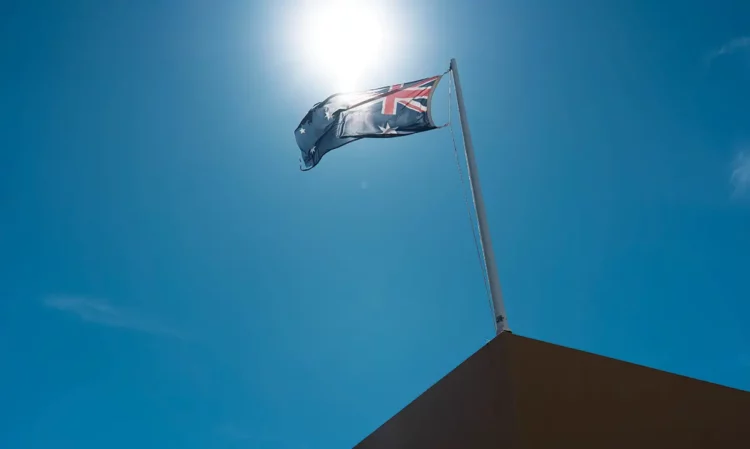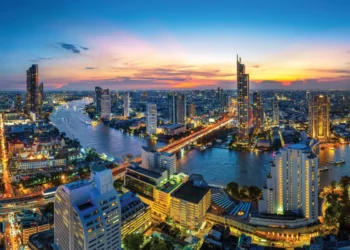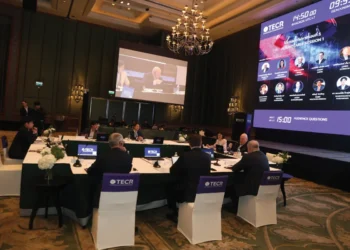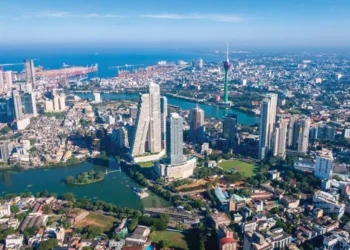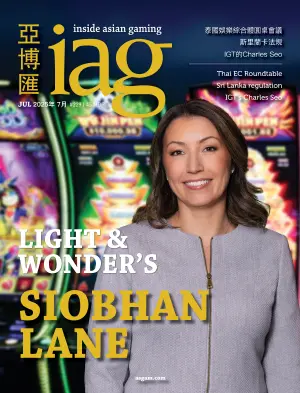Economist Dr Andrew Russell delves into the form and nature of casino regulation in Australia and some of the problems the country’s state-based monopoly system has created.
The Magic Pudding” is a classic of Australian children’s literature. Unfortunately for Australian casino gamblers, their nation’s various state governments have treated them like that book’s titular character – a source of sustenance that infinitely regrows itself back to wholeness after a slice is extracted.
 In the aftermath of a period of enthusiastic expansion, followed by a sudden crackdown from the source of tourism that said expansion was targeted towards, the Australian casino industry has become ensnared in scandals and pounced upon by regulators who seem to be animated by a vindictive crypto-prohibitionism. Whether these events trigger a reconsideration of Australian casino policy still remains to be seen, but I suspect such reconsideration is unlikely to occur.
In the aftermath of a period of enthusiastic expansion, followed by a sudden crackdown from the source of tourism that said expansion was targeted towards, the Australian casino industry has become ensnared in scandals and pounced upon by regulators who seem to be animated by a vindictive crypto-prohibitionism. Whether these events trigger a reconsideration of Australian casino policy still remains to be seen, but I suspect such reconsideration is unlikely to occur.
In the first section of this article, I shall give a broad overview of how Australia’s casino industry is regulated and what motivates Australian governments to impose this manner of regulation. In the second section of this article, I shall describe how the industry expanded in the last decade, primarily in response to the rise of Macau and the lure of Chinese gambling tourists. In the third section, to be published in the February issue of Inside Asian Gaming, I shall detail how Australian casinos’ gambles on China went sour and, in part as a consequence, how Australia’s casino sector suddenly became a lightning rod for both criticism and regulatory crackdowns. I will conclude with some comments about the industry’s future prospects as well as the potential (or lack thereof) for regulatory reform.

Monopoly-minded
The core pattern that characterizes the Australian casino industry is that of government-enforced geographic monopoly over the “locals” table games markets. A quick look at Australia’s casinos and where they are located makes it clear – casinos are typically very distant from one-another and each casino is the sole provider of table games for its location. Only three exceptions exist – South East Queensland and Tasmania, where both casinos are owned by the same firm (Star Entertainment and the Federal Group respectively), and Sydney, where Crown Resorts only competes in the VIP tables segment of the market, and mass-market gambling is exclusive to Star Entertainment. VIPs – interstate and international players – have the money to fly to different destinations in order to gamble, and thus form a competitive market segment, but the locals market is always a monopoly within a large geographic radius. Due to this monopoly, which is imposed by the states through the licensing system, the locals market provides the casino with the greatest profit margins. These monopoly-enlarged profits are then used by the casino to build and sustain lavish VIP facilities (such as opulent private salons, complimentary top-shelf beverages and destination luxury hotels) with the capacity to attract low-margin-yet-highly-lucrative interstate and international gamblers.

To put it in concise technical terms, geographic separation between casinos is used to cultivate and extract monopoly rents which are then used to cross-subsidize the VIP market in order to maximize gross gambling revenue (and therefore government revenue). To put it in simple terms, the locals are screwed over in order to fund the kind of gambling experience that attracts whales.
This government-imposed pattern has no relationship to the AML, CTF or KYC obligations casinos are (justifiably) faced with. Nor does this pattern serve to mitigate problem gambling; whilst apologists for this style of casino regulation might claim that the artificially high prices and restricted availability of table games caused by the Australian model reduce the prevalence of problem gambling, and that the taxes levied on GGR are all about funding treatment for problem gamblers, these claims are proven demonstrably false by the gambling economics literature. It is rational, rather than pathological, gamblers who are more likely to be deterred from gambling by artificially high prices, as problem gamblers have highly price-inelastic demand. In addition, GGR taxation goes far beyond what would be necessary to fund treating problem gamblers and is deeply unsuited to being used to “internalize” any externality caused by problem gambling, since only problem gamblers generate problem gambling and the negative externalities of problem gambling are not imposed piece-by-piece with each spin of the roulette wheel.
Indeed, to the extent that problem gambling’s harm is a function of the amount problem gamblers lose, artificially-expensive gambling increases rather than decreases the social costs of problem gambling. The interests served by Australia’s regime of casino regulation are the interests of the government (tax revenue primarily), and certainly not those of gamblers (good gambles at reasonable prices with good service).

With open arms
The rise of Macau represented a pivotal turning point for the casino industry across the world, and Australia was no exception. Whilst only one Australian firm – Crown Resorts – was able to enter the Macau market, the other large players in Australian casinos also responded to the promise of being able to peel off lucrative Chinese baccarat junkets. New Zealand-based SkyCity (a firm that, in its home market, has the same state-ensured monopolies Australian casinos have), which once operated properties in both Adelaide and Darwin, sold their Darwin property and expanded their Adelaide casino with additions including new casino space (both main floor and VIP), new restaurants and a destination luxury hotel with an opulent villa and VVIP gambling salons with panoramic views. The Star Sydney entirely rebuilt its VIP gambling facilities. The Star Gold Coast did similarly, greatly expanding their main casino floor and VIP facilities in the process and adding an all-suite luxury hotel tower (of which an entire floor was dedicated to VVIP gambling salons). The Star Brisbane was greenlit by the Queensland State Government, representing an immense upgrade to the lackluster Treasury Hotel & Casino, and featuring not just a wrap-around sky deck but an entire floor of decadent VVIP gambling salons immediately beneath it.
 Crown placed the biggest wager on the expected inflow of Chinese gambling tourists to Australia. Whilst they entered the Macau market directly though a joint venture with Lawrence Ho called Melco-Crown Entertainment, they also expanded their Melbourne property’s VIP facilities, purchased Perth’s Burswood Casino from Genting, proceeded to redevelop it into Crown Perth and expand it with Crown Towers Perth (which included not only several absurdly opulent villa accommodations but also half a floor of VVIP salons), and developed Crown Sydney. Crown Sydney is an anomaly among Australian casinos, as it is prohibited from offering mass-market gambling entirely (The Star Sydney retains a monopoly over that segment) and only competes in the VIP segment of the market. Due to the competitiveness of the VIP segment, the profit margins are low, and consequently James Packer (who was still the Chairman of Crown Resorts during Crown Sydney’s development and construction) described the projected economic prospects of Crown Sydney as “tough”. Unfortunately for Packer, it was about to get tougher.
Crown placed the biggest wager on the expected inflow of Chinese gambling tourists to Australia. Whilst they entered the Macau market directly though a joint venture with Lawrence Ho called Melco-Crown Entertainment, they also expanded their Melbourne property’s VIP facilities, purchased Perth’s Burswood Casino from Genting, proceeded to redevelop it into Crown Perth and expand it with Crown Towers Perth (which included not only several absurdly opulent villa accommodations but also half a floor of VVIP salons), and developed Crown Sydney. Crown Sydney is an anomaly among Australian casinos, as it is prohibited from offering mass-market gambling entirely (The Star Sydney retains a monopoly over that segment) and only competes in the VIP segment of the market. Due to the competitiveness of the VIP segment, the profit margins are low, and consequently James Packer (who was still the Chairman of Crown Resorts during Crown Sydney’s development and construction) described the projected economic prospects of Crown Sydney as “tough”. Unfortunately for Packer, it was about to get tougher.

Again, it must be emphasized that Australia’s state governments were all for this expansion and greenlit it at every stage. They wanted the money from Chinese gamblers and were well aware that this meant having to tolerate junket play (which they did, for years). They were also well aware that these junkets were suspected of links to organized crime, and that the junkets themselves were grey-market operations. It is hard to avoid the suspicion that Australia’s state governments were complicit and perhaps even intentionally turning a blind eye to what was happening in those VVIP rooms.
In Part 2 of Dr Russell’s examination of Australian casino regulatory policy, to be published in the February 2025 issue of Inside Asian Gaming, he will explore the downfall of the VIP gaming market in Australia and how domestic casino patrons are paying the price for industry and regulatory missteps.






